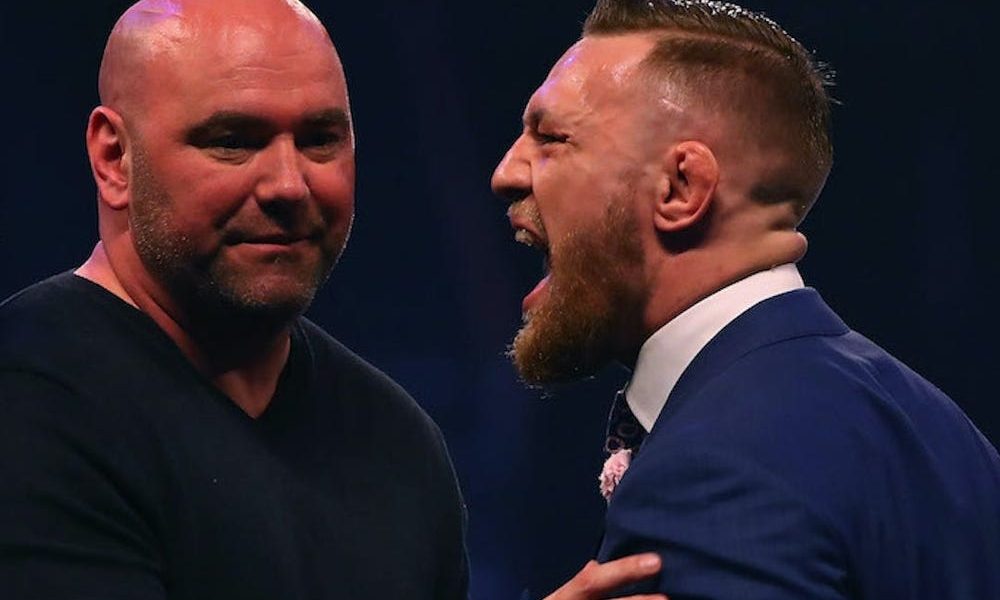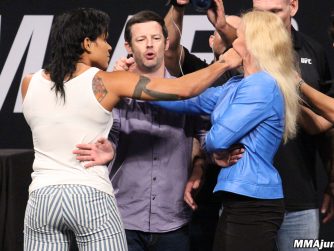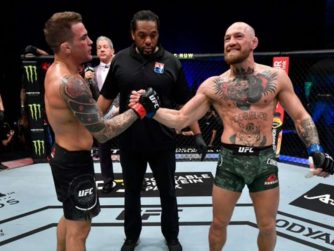Select few will find their names and actions synonymous with those of pioneers, however that is precisely what the UFC has achieved with the sport of MMA. Currently basking in the felicity that comes with initiating the return of sports with Fight Island and coming off one of the most exciting events of the year in UFC 256, it seems all La Vie En Rose for the promotion.
An incessant tenacity for progression has driven the company to lofty heights. A quote from UFC President Dana White to The Las Vegas Sun in 2009 is indicative of it, “UFC will be the biggest sport in the world by 2020.” Disregarding the obvious flaw in the usage of UFC as the sport itself, be it due to a slip of the tongue or a belief in his monopolistic capabilities, the mission statement, while closer to fruition, has evidently failed to live up to the billing. The growth of MMA and the sinking of its claws into the global market is a feat the UFC are rightfully accredited with. However, hindsight renders the potholes on its road to the summit self-evident and it all started with a simple goal, to find out the superior Martial Art.

On November 12th, 1993, fans witnessed not only the birth of a promotion, but a sport. A brainchild of Art Davie and member of the esteemed Gracie family in Rorion Gracie, an eight man tournament was conducted with reckless abandon in mind.
“Unedited! Uncensored! Unleashed!”, quite literally to their detriment as they would grow to learn.
A lengthy list of three whole rules governed the proceedings. BJJ black belt Royce Gracie represented his family and ended up winning the “War of the Worlds” tournament, an event as violent as one would expect with rules as arbitrary as the show’s future. Primal bloodthirst garnered enough attention to deem the show a success while bringing in its fair share of abhorrence.
By 1996, the sport had gained enough notoriety to turn the heads of U.S authorities. Senator John McCain championed the cause of tranquility, urging all states to ban the “human cockfighting”. With 36 states agreeing to ban “no-holds-barred” fighting, the UFC had their backs against the proverbial cage and akin to Anthony Pettis against Stephen Thompson ala UFC Fight Night 148, the UFC struck back, though not as swiftly. Over the course of three years, the UFC had successfully rebranded itself as a legitimate sport with the introduction of an infrastructure. Weight classes, defined rounds, fingerless gloves, a 10-point scoring system, and a time limit led the UFC to traverse their first steps towards separation from its tarnished reputation. The long-winded path to secure sanctioning drove the parent company SEG to the brink of bankruptcy.

Enter the Feritta brothers. Frank and Lorenzo Fertitta acquired the brand for an exorbitant price of $2 million, primarily due to the faith the owners had on the brand name. With partner Dana white at the helm, the building blocks laid down by Art Davie were looking to take shape, although not overnight. Despite the success of events like UFC 40, instability reigned over the promotion as the parent entity Zuffa suffered a loss of $34 million in just three years.
Ingenuity gave way to common sense as the promotion tried their hand at television, a tall task considering their reputation. Eventually, Spike acquiesced and bestowed The Ultimate Fighter with a treacherous sojourn. TUF imbibed the mainstream appeal of a reality TV show and added a dash of barbarity, and it paid off. The eventual finale of the first season between Stephan Bonnar and Forrest Griffin is given credit for saving the UFC by Dana White. The promotion saw itself create distance between themselves and the tumultuous times as consistent numbers started rolling in. A switch from Spike to Fox stood testament to its growth. Their UFC 66 event featuring Tito Ortiz and Chuck Liddell drew over a million PPV buys.

Progression is key to sustenance. Finally digging their foothold on the MMA world, the next step for Dana White and the company was to acquire their competitors. Promotions like WEC, WFA, Pride Fighting Championship and Strikeforce were all consumed in the UFCs bid for global supremacy, leading to the introduction of the women’s division and an influx of lighter fighters, indicative of the UFC’s transition from the norm. An inundated roster with their stronghold on the global market already set, the UFC lacked a spark, an element that would transcend the basis of the sport, someone that would alter the perception of the sport of MMA, one that – it’s Conor McGregor.

With the gift of gab and an unfathomable amount of confidence in himself, the Irishman took over the sport. With his Mystic Mac persona, Mcgregor made everything he said can’t-miss and everything he did must-see. Becoming the first ever concurrent two-division champion in UFC history after one of the most masterful performances in the octagon against Eddie Alvarez, McGregor had set a standard, seemingly to the detriment of the rest of the fighters. Talent wasn’t enough anymore. Unmissable charm became a pre-requisite to be a star. It wasn’t long before fighters like Kevin Lee and Colby Covington got into their suits and struts, flaunting their riches with a painful tribute to the Champ Champ.
Trouble followed the Irishman outside the cage as scandals took centre stage. Fights became scarce after his win against Alvarez, fighting just twice since in the octagon, including a devastating loss to then-champion, Khabib Nurmagomedov.

One wouldn’t be amiss to say the desire to see McGregor perform has taken a dip. However, the harsh reality is, talks surrounding Conor’s return in January of 2021 against Dustin Poirier took prominence in conversations for fans over a card with two fighter of the year candidates in Kevin Holland and Daveison Figueiredo. The transition from ability to aura hurts the sport. Yet, as business goes, regardless of its effect or the unceasing controversy that comes with Conor, the UFC wouldn’t miss an opportunity to have the man on the card, unsurprisingly.
The UFC’s journey from human cockfighting to a $1.5 billion deal with ESPN speaks volumes about its pliancy and gumption. Boasting the most talented roster in the world with numbers undue of an explanation, the promotion seems to be soaring. However, a journey back to 2009 puts things into perspective.

White’s claim of the UFC being the biggest sport by 2020 in retrospect, falls miles away from reality. In fact, it isn’t even close nor will it be. It is just an item in the list of asinine statements made by the UFC President. Be it rightfully lambasting Oscar De La Hoya for booking Chuck Liddell in a fight before placing BJ Penn on his card a mere month later or denouncing the women’s division and its existence in the UFC, Dana White’s opinions are volatile, to say the least.
White’s avaricious nature is evident in his actions. The Reebok deal squandered sponsorship opportunities for fighters while offering a criminally low percentage of revenue. Fighter pay has long been a contentious topic of discussion. Despite a spark of a revolt with Henry Cejudo, Jorge Masvidal and Jon Jones engaging in public feuds with the UFC, lack of unionisation hinders a tangible change from occurring. Fighters such as Marvin Vettori and Jordan Griffin have publicly voiced the necessity and inevitability of a union. Shockingly, White despises the notion as the promotion maintains its stance of being the most lucrative option for fighters while persisting with marginalisation of their artisans.
Captivating match cards with exceptional numbers paper over the animosity between the independent contractors and the top brass. White’s maverick turned hubristic attitude favours them monetarily The pioneering of the resumption of sports during a pandemic leaves no doubt about their mindset, Monopolistic intent stunts growth. Marquee matchups, despite its frailties, has been the go-to strategy in combat sports. The UFC stand at a precipice. Their adaptability transfigured a $2 million name to a multi-billion dollar juggernaut. Their financial stronghold will hand them the edge over their ameliorating rivals. A transition phase looms ahead with the promotion’s ability to manufacture a star in question. If history is any indication, they’ll find a way, they always do.






